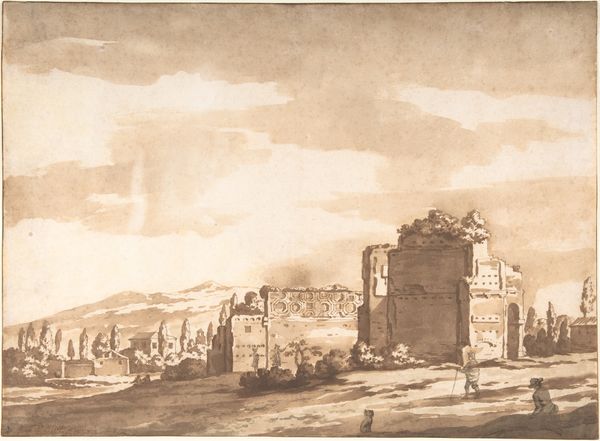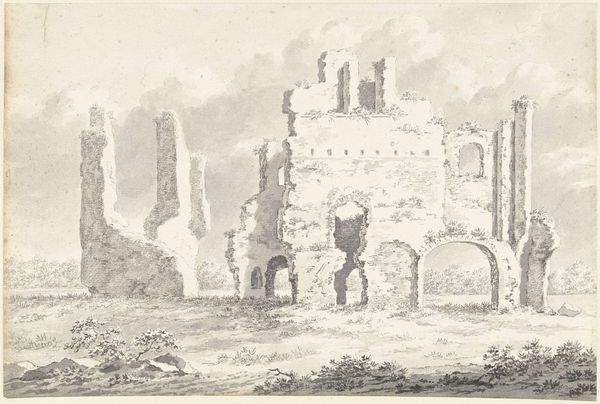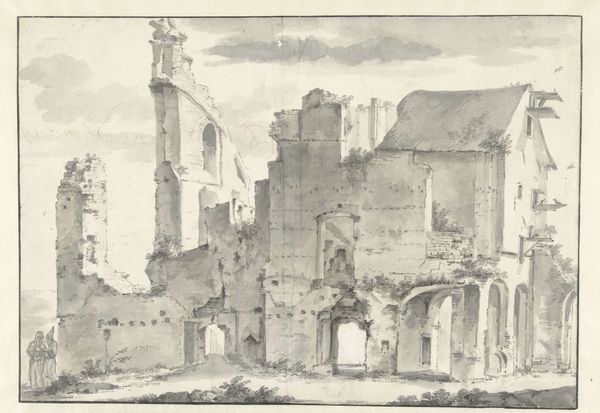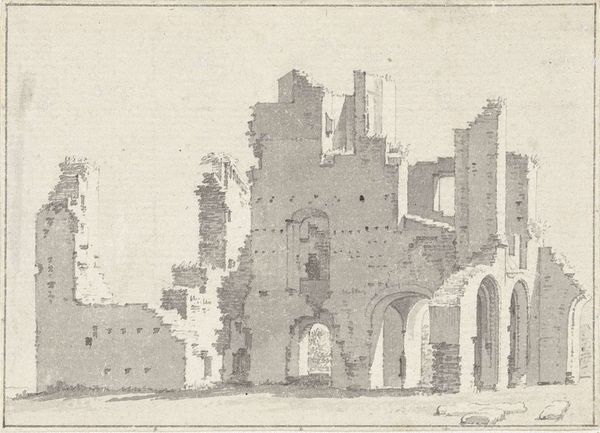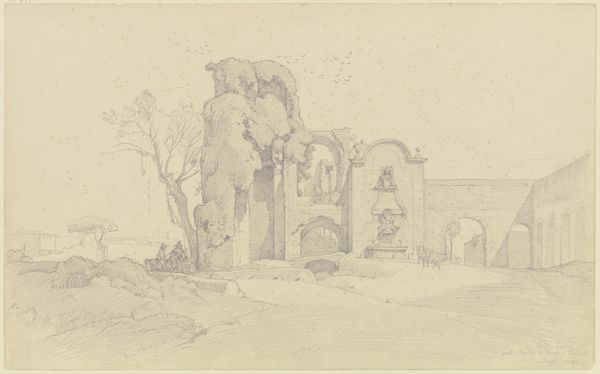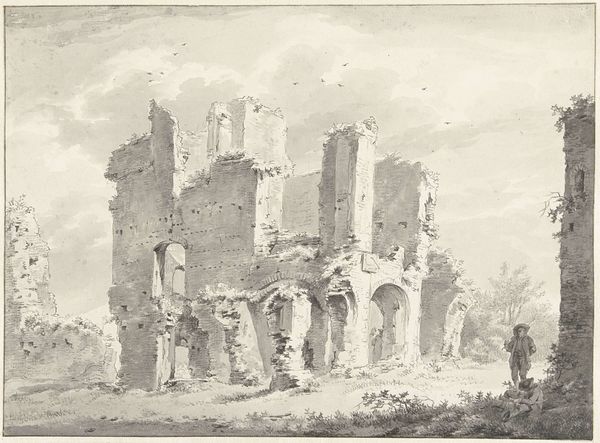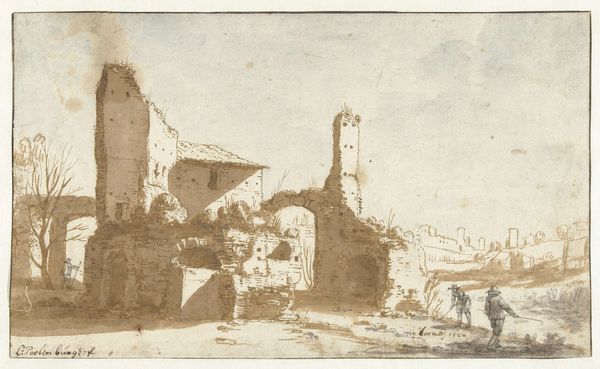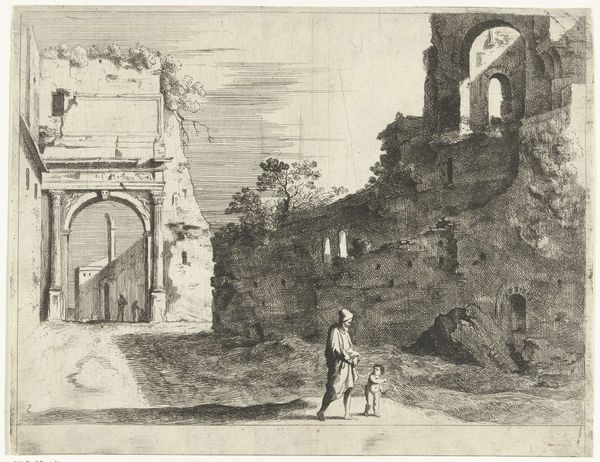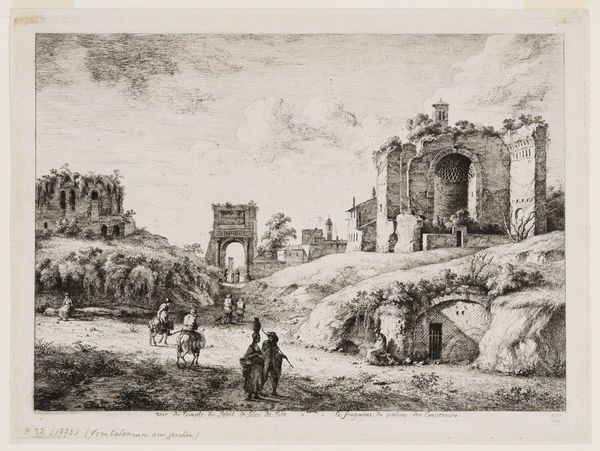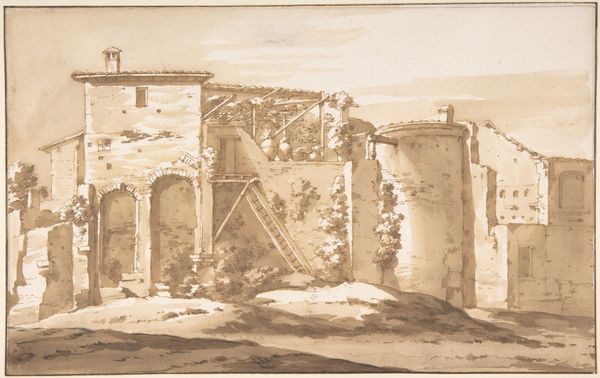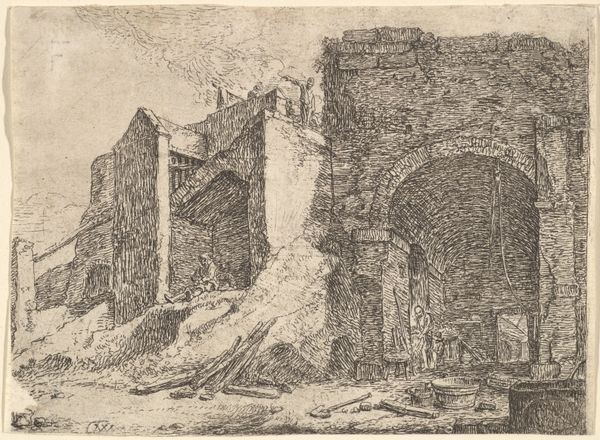
Ruïnes van de grote zaal van de Thermen van Caracalla, Rome 1778 - 1838
0:00
0:00
anthonievandenbos
Rijksmuseum
drawing, print, etching, paper, ink
#
drawing
#
neoclacissism
# print
#
etching
#
landscape
#
paper
#
romanesque
#
ink
#
cityscape
Dimensions: height 120 mm, width 210 mm
Copyright: Rijks Museum: Open Domain
Curator: We're looking at "Ruïnes van de grote zaal van de Thermen van Caracalla, Rome," an etching with ink on paper crafted by Anthonie van den Bos, most likely sometime between 1778 and 1838. It resides here at the Rijksmuseum. Editor: Immediately striking is this ghostly emptiness. The muted tones evoke a profound sense of absence, of lost grandeur and societal decline. Curator: Precisely. Van den Bos, working within a Neoclassical framework, presents us not just with a ruin, but with a potent symbol of time’s relentless march and the ephemerality of power. The Thermen of Caracalla, once a vibrant hub of Roman social life, are now mere remnants. Editor: I find myself wondering about the figures sketched into the scene. Their presence—mere silhouettes—serves as a somber counterpoint, emphasizing the diminished scale of human existence against the backdrop of this monumental decay. Their arrangement hints at an unsettling dialogue. Curator: Absolutely. The figures offer a human element, prompting the viewer to reflect on their place within this cycle of creation, destruction, and rebirth. The very act of representing these ruins became a popular trope that reinforced particular narratives about power and its relationship to societal structure. The ruins themselves had become stages upon which people could discuss political and societal issues safely under the guise of aesthetics. Editor: Yet it’s difficult to ignore the power structures inherent in that narrative. Who are these contemplative figures? Do they benefit, like Van den Bos, from the legacy of the ruins or do they pay its social cost? This depiction arguably participates in the act of framing their contemporary existence through the aesthetics of neoclassical idealization. It's a reminder to look critically at what legacies get memorialized and at what expense. Curator: A pertinent reminder indeed. Ultimately, this work underscores how historical contexts and interpretations continuously shift through an intersectional lens, inviting a nuanced engagement with the image and its legacies. Editor: It leaves me pondering on the layers of meaning embedded within this depiction— a conversation starter rather than a conclusion.
Comments
No comments
Be the first to comment and join the conversation on the ultimate creative platform.

